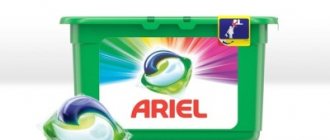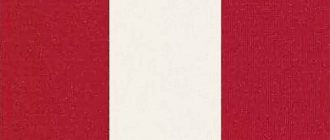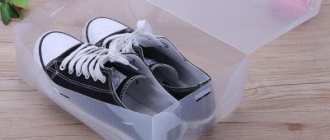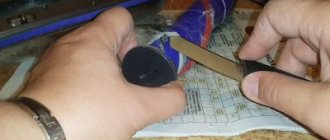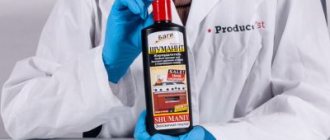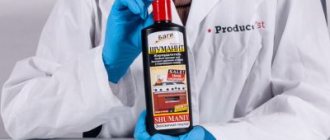The things we wear have labels on them. They usually write what our clothes are made of and what fibers were used in its production: natural or synthetic. Among the latter, the popular polyester often appears, although it is new to the textile market.
However, according to statistics, from this material, obtained from petroleum products, 50 to 60% of all textiles in the world are made. What kind of fabric is this, what are its properties, where and how is it used and how to care for polyester clothing?
What kind of fabric is polyester
Polyester (pes, polyester, PE) is a synthetic fabric that looks like cotton or wool, made from polyester (or synthetic) fibers.
In 1946, British scientists obtained a solid substance with good viscosity - polyethylene terephthalate (PET) and the first synthetic fiber from petroleum products, which for general use was called terylene (translated as textile fabric). Later, DuPont bought the right to produce polymers. The whole world has been swept by the fashion for new fabrics. Wearing clothes made of Dacron was considered fashionable. At first, few people paid attention to the fact that the fabric rustled when walking and hardly “breathed.”
In our country, the new fabric is known as lavsan. The name of the synthetic material, obtained by Russian scientists in 1949, consists of the first letters of the name of the institute where it was produced: Laboratory of Macromolecular Compounds of the Academy of Sciences. In Russia, polyester was not immediately used for the production of fabrics in the textile industry. It was originally used to make packaging and adhesive tape. It spread already in the early 60s.
In other countries, the trade name of this fabric sounds different. For example, in the USA it is Dacron, in France – Tergal, in the UK – Terylene, in Japan – tetheron, in the Czech Republic – tesil, in Poland – elana, in Germany – diolene. All these materials consist of polyester fibers and essentially have the same properties. Their differences are in the way the threads are intertwined and the fibers are formed.
History of creation and types of polyester
Polyester was derived from petroleum products in the first half of the 20th century. Initially, it was used to produce fabrics for technical purposes.
Polyester fiber appeared in the Soviet Union in 1949. In the post-Soviet space it is better known as lavsan.
How is polyester obtained?
Polyester is made from polyester synthetic fiber, which is obtained after processing petroleum products.
The production technology is complex. It’s difficult to understand what’s what without knowledge of chemical processes. But if you don’t go too deep and don’t use special terms, the scheme for producing polyester threads looks something like this:
- First, the starting components are obtained from hydrocarbons and oil.
- In the process of chemical transformations, thermoplastic polystyrene is released from prepared raw materials under the influence of high temperature.
- It is cleaned of impurities and heated. At high temperatures, the plastic melts and is passed in thin streams through small holes - dies. As they cool, they form polyester fibers.
- The resulting threads, depending on the technology used, are stretched to the required length, density, strength, and smoothness.
- From the fibers combined into yarn, as a result of the interweaving of main and transverse synthetic threads, a fabric fabric is formed. It can look completely different: from the finest lace to a material of great density and strength.
When other synthetic or natural threads are added to it during the weaving process, new fabrics are obtained that are attractive in appearance, pleasant to the touch, durable, dense, and moisture resistant.
The appearance of the fabric and its characteristics depend on the shape of the fibers, the method of weaving the threads and the chemical composition of the raw materials used.
Photo: what polyester fabric looks like
In its pure form, synthetic polyester looks like snow-white wool, perfectly imitating natural fibers. After adding other fibers to the composition, the fabric takes on the appearance and properties of the added materials. Polyester can be fluffy or smooth, shiny or matte, in different sizes and fiber weaves. In the photo below you can see how different polyester materials look.
Properties of polyester
Polyester, known in chemistry as polyethylene terephthalate (PET), and in the textile industry as lavsan, is a thermoplastic that belongs to a class of polyesters obtained at high temperatures by polycondensation in a vacuum from dihydric alcohol ethylene glycol and terephthalic acid.
There are saturated polyesters - fabrics are made from them. Reinforced plastics are obtained from unsaturated ones.
Polyester is a solid, matte white when crystallized and transparent in the amorphous phase.
- It is durable and has dielectric properties.
- Does not deform even after getting wet.
- Melts at temperatures between 250 °C and 265 °C.
- Softens at 245 °C.
- Decomposes at temperatures above 350 °C.
- The percentage of elongation of polyester fibers is up to 55%.
- The percentage of moisture absorption from its own weight is 0.3%.
- Dissolves in toluene, benzene, acetone, ethyl acetate.
- Fabric density (ratio of thread mass to its length in denies, 1 den = 1 g/9 km of thread) – from 1.38 to 1.4 g/cm3.
Common types of polyester by density:
- 300 d – PE with minimal density, does not allow water to pass through. Various accessories and equipment for tourists and athletes are made from it.
- 500 d is a durable fabric from which tents, backpacks, and awnings are made.
- 600 d - a material resistant to aggressive external environments is used in the production of equipment for sports and travel equipment.
- 900 d – fabric for clothing and equipment for use in extreme conditions. Repels water, does not transmit ultraviolet radiation, withstands long-term abrasion, and retains the shape of products well.
Production
What is polyester made from? Creating polyester, which is a type of polyester fabric, is a complex process. It is a chemical reaction in which many components are involved. Petroleum products are used for production. They have a number of special properties, due to which they are used in light industry both in pure and combined forms. The raw materials are dimethyl terephthalic acid and ethylene glycol. However, the creation methods in each country differ, although the principle itself remains the same. So, what is polyester (polyester) fabric?
Dimethyl ether at a temperature of about 200 degrees undergoes transesterification, while diglycol ester of terephthalic acid at a temperature of 270 degrees undergoes polycondensation to form polyethylene terephthalate resin. Fibers are precisely obtained from this melt.
However, when creating fiber, it is better to use ethylene oxide, which was created by catalytic oxidation. This is necessary, since ethylene oxide obtained through ethylene chlorohydrin almost always contains impurities of hydrocarbons containing chlorine.
Stages of creating polyester:
- synthesis of polyethylene terephthalate;
- fiber creation;
- treatment.
Methods for producing polyethylene terephthalate:
- from terephthalic acid chloride and glycol based on an inert solvent, using an alkaline catalyst;
- during the polyesterification of terephthalic acid and glycol, which is taken in large quantities, using esterification catalysts;
- transesterification of dimethyl terephthalate with ethylene glycol with further polycondensation of the resulting diglycol terephthalate.
The first methods are considered unprofitable due to a lack of materials for production.
The latter has found wide application. It consists of two stages:
- esterification
- polycondensation using antimony trioxide.
As a result of polycondensation, all components (crude, catalysts, additives) are mixed together.
As a result of esterification, esters based on alcohol and acids are obtained. Prepolycondensation and polycondensation are combined into one stage, at which the synthesis of polymers and the isolation of compounds with a low molecular structure occur. Next comes the polystyrene granulation process.
Next comes solid-phase prepolycondensation. At this stage, cooling and sudden heating of the polymers occur. This is necessary to increase their viscosity. However, production is not over yet. The melt is squeezed out through special holes in the machines, cooled again, granulated and sent to create fiber.
The result of such complex operations is the creation of the final product that is used to produce fabric.
We also note the possibility of recycling polyethylene terephthalate waste, resulting in recycled polyester.
Application of material
Raw PE is available in the form of fiber, plastic and film. Initially, it was mainly used to make plastic containers, films, packaging bags, and fabrics for technical purposes. And now household appliances, compact discs, durable cords, furniture upholstery, bags, plastic bottles, and containers are still made from recycled material. And recycled PE is widely used in textile production.
Depending on the method of weaving the fibers, polyester can be voluminous, textured, staple, filament, or in the form of monofilaments.
These fabrics are used to make clothes of various types and purposes:
- Underwear, socks, blouses, dresses, shirts, trousers, tracksuits.
- Outerwear.
- Overalls.
- Bed sheets.
- Decorative textiles: curtains, tablecloths, bedspreads, furniture covers, bathroom rugs.
- Toys.
The material is also used as insulation and filler for outerwear, blankets, pillows and lining material, and as the main fabric for sewing backpacks, suitcases, umbrellas, tents, and sleeping bags.
Application in sewing workwear
When sewing workwear, special requirements are placed on fabrics: clothing must be comfortable to wear, last a long time, be easy to care for, have protective properties and be inexpensive.
Very often, material for workwear is treated with various impregnations (water-repellent, acid-proof, heat-resistant) to impart additional properties.
All these requirements are met by mixed materials, such as:
- "Oxford" (a mixture of polyester and nylon) is very often used when sewing workwear. It turns out to be very durable, insensitive to temperatures, resistant to humidity and chemicals. Oxford is used to make summer work suits, as well as insulated suits for cold temperatures.
- Materials such as “Greta” , “Twill” , “Tomboy” (various ratios of polyester and cotton) are used when sewing clothes for indoor work. The clothes are breathable, but at the same time very dense, tear-resistant, and durable. It can be washed at high temperatures, it protects against dust, and does not require ironing.
- Fabrics such as “Pulse”, “Metelitsa”, “Panacea” (a mixture of polyester fibers and viscose) are used to sew clothes that fit well and look elegant. The overalls made from them are intended for medical workers, cooks, flight attendants, and office workers.
Possessing a number of necessary properties, polyester seems to have been created for the manufacture of workwear . What else is polyester used for?
We will tell you what materials a welder’s summer clothes are made from in the next article.
Technologies for producing unique fabric are being improved, but the principle does not change. Read about the properties and qualities of Bolognese fabric in this publication.
Types of fabrics
What kind of material is polyester in composition: natural or synthetic?
Yes, these can be 100% PE fabrics made entirely of synthetic fiber threads. But textiles made from pure polyester are rare. More often this is a mixed option.
Polyester fabric has different textures: rough, smooth, soft, silky and hard, matte and with a synthetic shine. The fabric can be dense and thin. Look like silk, wool or cotton.
Depending on the composition and purpose, several types of textile fabric can be distinguished:
- Raincoat (dyuspo, Jordan, taffeta, prince, bonding, file) - windproof, moisture-resistant fabric. It is used for sewing outerwear and workwear.
- Decorative (silk, jacquard, organza, brocade, taffeta, guipure) is a beautiful elegant fabric for interior items and festive outfits.
- Awning is a waterproof, durable material for sewing tents and awnings.
- Bed linen (polysatin, polycotton) is a durable, wear-resistant and long-term use fabric for sewing bed linen.
- Knitted (fleece, jersey, micro-oil, twill) is a fabric made from a mixture of natural fibers and polyethylene, which is used for sewing warm trousers, jackets, thermal underwear and other clothing.
- Insulation (sintepon, holofiber, Thinsulate, Isosoft) - used as a filler for blankets, pillows, and outerwear.
- Lining – the fabric is used in the form of a polyester lining.
Most often, the following types of polyester are indicated on clothing labels:
- Polyester Mini Mesh is a mesh material. It is used in sportswear as a lining. This fabric removes excess moisture during physical or sports activity and provides natural ventilation.
- Polyester Microfiber is a lightweight and durable fabric formed by weaving very thin threads. This material does not allow wind to pass through, does not get wet, and warms well in cold weather.
- Polyester Peach Washer is a delicate fabric with a velvety surface. Has the same properties as Polyester Microfiber.
- Polyester / PVC – fabric of increased strength and moisture resistance. Additionally treated on the inside with polyvinyl chloride.
- Polyester Polar Fleece is an unstructured fabric that is pleasant to the touch, has a smooth surface and increased strength.
- Polyester Tricot Shiny – the fabric has a characteristic shine.
- Polyester Tricot is a durable material that does not lose its shape and color with numerous washes and long-term use.
Comparison
Is polyester better than other synthetic fabrics or not? Which is better viscose, polyester or polyamide? Let's figure this out using the comparison method.
| Fabric/Feature | Viscose | Polyester | Polyamide |
| Compound | Man-made fiber based on cellulose | Synthetic fiber based on melt polyethylene terephthalate or its derivatives | Synthetic fiber based on polyamides |
| Tactile sensations | Soft and tender | Fairly stiff fabric | Soft and silky |
| Appearance | Has a pleasant shine, similar to natural silk | Has a slight “synthetic” shine | Depending on the production, it can be smooth or rough, shiny or matte |
| Scope of application | Used in almost all areas of the textile industry | Wide scope of application. Used for both underwear and outerwear | To create products that have direct contact with the body |
| Strength | The fiber is quite strong, but if not properly cared for it tends to fray easily. | Heavy duty | Very durable |
| Flammability | Highly flammable. Burning is smooth | Melting point 200 degrees | Does not burn. As a result of melting, a small ball is formed |
| Hygroscopicity | Absorbs moisture well | Practically does not absorb moisture | Does not absorb moisture |
| Degree of creasing | High degree of creasing | Slight creasing | Doesn't wrinkle |
| Breathability | Good air permeability | Virtually no air leaks | Good air permeability |
| Coloring | Suitable for painting | Difficult to paint | Good for painting |
| Static electricity | Does not accumulate | Accumulates | Accumulates |
| Care | Needs careful care. Repeated washing may cause the thread to fade and become dry and brittle. | Does not require special care. Easy to wash and dry quickly. Machine washable at 40 degrees (in some cases a washing temperature of 60 degrees is allowed) | Easy care. Both hand and machine washable at 40 degrees. Can be dry cleaned |
| Ironing | Can be ironed at a temperature not exceeding 150 degrees on the reverse side | Does not require ironing, but in special cases it is permissible to use an iron at a minimum temperature using additional fabric | Does not need ironing. But in extreme cases, ironing at the minimum temperature without using steam is permissible |
Polyester combined with other fibers
Mixing natural and synthetic fibers improves the properties of both.
PE + polyamide
When polyamide is mixed with polyester, a flexible, lightweight fabric similar to silk is obtained. It does not fade, does not electrify, does not allow moisture to pass through, and practically does not change shape or color. It is often used when sewing women's underwear.
The disadvantages are that the fabric is destroyed in direct sunlight, does not absorb moisture well, and is not suitable for hot weather.
From thicker fibers, another type of weaving produces a material with high performance properties (withstands atmospheric, chemical and mechanical influences) - “Oxford”. It is used to make workwear and clothing for tourists.
PE + elastane (lycra, spandex)
From elastic smooth fabric in which polyester fibers are mixed with elastane (most often in the proportion: 5-15% elastane and 85-95% polyester), tracksuits, tights, stockings, tight dresses, swimsuits, gloves, leggings, theater costumes are sewn. .
In this case, the properties of the fabric to stretch at any density and allow air to pass through are used.
The downside is that white things, if they are exposed to light for a long time, turn yellow over time.
By the way, elastane, lycra, spandex are different names for the same fiber. In other countries this material is known by other names.
PE + viscose
Added polyester fibers make viscose more resistant to shrinkage, deformation, and fading. The new elastic, durable fabric called polyviscose perfectly “breathes” and absorbs moisture, dries quickly and does not fade.
Products made from mixed fabric are pleasant to the body, wear for a long time without deformation, without forming puffs or abrasions. This fabric is used to make clothes for home, leisure, and work. Recommended combination: 70% polyester - 30% viscose.
PE + cotton
A soft, body-friendly fabric in which polyester fibers and cotton threads are woven is called polycotton. It is mainly used to make clothes for the summer, home textiles, and bed linen.
The combination of these two fibers (in a ratio of 50 to 50%, or PE - 35%, cotton - 65%) eliminated the disadvantages inherent in the capricious natural fabric. The new material wrinkles less, does not fade, does not lose shape, can be easily dyed in different colors, and is worn for a long time.
PE + wool
Fabric products that combine wool with polyester are warm, do not wrinkle, and are not eaten by moths. They do not stretch or shrink when washed.
When the material is treated with special means, it becomes waterproof and windproof. Coats, suits, and trousers are often made from it. And knitting threads make warm, light scarves, sweaters, and hats.
Advantages and disadvantages
Like any fabric, polyester is not perfect. It has its pros and cons. Although, thanks to constant developments in this industry, the latter are gradually being eradicated. Perhaps in the near future scientists will create a fabric completely free of defects!
In the meantime, we will answer the most important questions for the consumer: what is polyester in clothes, is it harmful, stretches or not, gets wet or not, can the material be worn in summer, etc.
Positive traits:
- Strength and durability;
- Easy to care for;
- Not susceptible to acids, solvents;
- Resistant to fading;
- Doesn't stretch;
- Does not deform when worn;
- Dries quickly;
- Heat resistance;
- Hydrophobicity. The material practically does not absorb moisture, so it remains dry even in bad weather; it can be used as a lining for warm clothes;
- Resistant to pilling;
- No exposure to harmful insects;
- Resistant to stains.
Flaws:
- Poor air permeability;
- It can be harmful. This is possible if during manufacturing there are monomers left that are not involved in the main chain. Over time, they can dissolve in water or become airborne, depending on the initial characteristics of the element (volatile or soluble).
- Has increased rigidity;
- Difficult to paint. The paint does not penetrate the fibers.
Reviews
How do consumers respond to polyester?
Those who prefer natural fabrics most often criticize synthetic fabric. Their arguments confirming the shortcomings:
- Such clothes are uncomfortable in hot weather.
- The fabric does not “breathe” well, you sweat quickly in it, skin irritation and itching are possible.
- It becomes highly electrified and crackles unpleasantly.
- In their opinion, any synthetics are terrible. It's harmful, uncomfortable, and looks bad.
- Clothes that come into contact with the body should contain minimal amounts of synthetics. This is especially true for children's clothing.
- They prefer to use polyester fabrics mainly for bags, curtains, home textiles, and jackets.
Yes, like many artificial fabrics, polyester has its drawbacks. Including those mentioned above. When compared with other synthetic fabrics, PE is afraid of high temperatures. The fabric may become deformed during washing at temperatures above 60 degrees and when ironing with a hot iron. If clothes are not properly cared for, they can quickly lose their appearance.
But there are other opinions of those who have tested clothes made from high-quality polyester and confirm its advantages.
The small content of synthetics in the composition of natural fabric does not affect the quality of clothing. Moreover, natural fabrics acquire new qualities:
- Resistance to dirt, fading, acids and solvents, durability.
- Clothing made from fabric with the addition of PE fibers lasts a long time, hardly wrinkles, does not stretch after washing, dries quickly, is not damaged by moths, and retains its shape well. She is easy to care for.
- Durable, heat-resistant fabric with water-repellent properties provides excellent protection from bad weather and wind and is indispensable for sewing seasonal outerwear, jackets, travel equipment, windbreakers and trousers.
- Clothes made from polyester last longer and cost less.
Pros of clothing
They have the following advantages:
- strength and wear resistance;
- resistance to fading and chemical attack;
- presence of water-repellent characteristics. The products are not afraid of rain or snow;
- optimal price-quality ratio;
- long service life;
- ease of care. Easy to wash, does not wrinkle, keeps its shape well after washing;
- the products are light, with a pleasant texture and hypoallergenic;
- do not allow air to pass through, retain heat well;
- weak antistatic effect;
- A wide variety of different types of fabrics are made from polyester;
- resistant to mold, moths;
- the production of synthetic materials is regulated by GOST.
Due to its unique features, polyester is in demand in everyone in many areas of life. The name polyester can be found on the labels of casual, outerwear, workwear, and tracksuits. Spectacular and warm jackets and fashionable coats are given to us by models made of polyester fabrics. Sports sets combine the characteristics of comfort, warmth and aesthetic appearance. Workwear impregnated with special bases will be resistant to chemical and thermal influences.
Polyester sweater
The addition of synthetic thread gives a premium look to shirts, trousers, dresses and underwear. The softness and convenience in everyday life have long been appreciated by zealous housewives, using bedding sets, bedspreads and pajamas. Sweaters, jumpers, pullovers, turtlenecks are presentable examples of high-quality knitwear.
Customer demand has long noted the lining base as the most comfortable and durable, and the insulation as the warmest and lightest. The children's world is in constant friendship with such fabrics. Using them to sew fun, beautiful and safe toys. Polyester is indispensable in travel equipment: durable and waterproof tents and sleeping bags are very valuable for a good trip. Synthetic textures accompany us even among everyday accessories and small things: umbrellas, gloves, curtains, ties, haberdashery.
When caring for clothes, it is useful to take note:
- Products should be washed in a delicate cycle, not exceeding 40;
- do not use bleaching agents;
- dry on a horizontal surface;
- products do not need ironing.
Are there any weaknesses?
When synthetic fabrics are heated strongly, their shape may change. This can be attributed to both disadvantages and advantages. When designing clothing models, folds and flounces are sometimes needed, which are obtained by applying a higher temperature to a certain part, thereby fixing the plan.
There are different types of synthetics. Of course, being 100% present is not an acceptable option. But there are many compositions worthy of attention: lace, elastane, suplex, microfiber, fleece, stretch polyester, micro-oil, nylon, Oxford, twill and other varieties will satisfy the most fastidious.
How to care for polyester clothing
You can wash polyester items by hand, in the washing machine, or take them to the dry cleaner.
Basic care recommendations:
- Do not heat the water above 40 degrees, wash in the “synthetic” mode.
- Do not rub too hard or twist when squeezing.
- Use detergents for delicate fabrics. Wash stains with soapy water. Bleach should not be used.
- Add fabric softener when rinsing to remove static electricity.
- Dry the laundry on a hanger in a straightened form. Not in the sun.
- PE clothes do not need to be ironed. But if necessary, you can do this with a not very hot iron through a damp cloth.
Composition and manufacture
What is polyester? This is a material made from polyesters - petroleum products. Production includes several stages:
- isolation of components for the production of polystyrene;
- obtaining liquid polystyrene from them;
- cleaning: mechanical and chemical;
- fiber production;
- finishing threads, giving them the desired properties;
- fabric production.
Despite the fact that polyester is made from petroleum products, its characteristics are similar to natural material - cotton. And the appearance of pure polyester is more like wool. Characteristics of the fabric: a good sample does not have an unpleasant odor, does not leave marks on the skin after wear, and does not fade. Clothes made from polyester fabric are comfortable to play sports in and allow the body to breathe. Synthetic textiles are also suitable for creating leisure clothing.
In addition to the versatility of polyester textiles, it is worth noting its sustainability. It retains its shape perfectly at temperatures not exceeding 40 degrees. Therefore, the manufacturer indicates on the label that the product is washed at this temperature. Fortunately, the material washes well in cold water.
